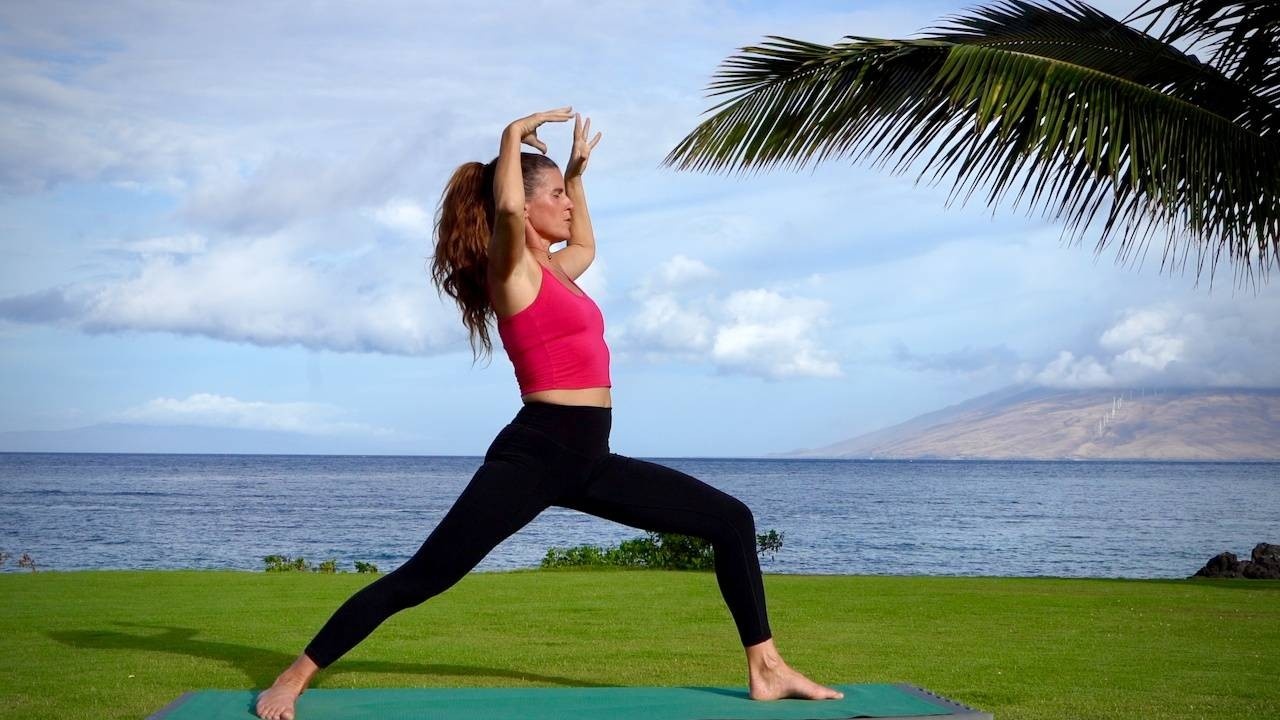Yoga alignment is not ancient

We yin yogis tend to agree on one thing: that yoga is best when it's about how our bodies feel, rather than how they look. However, many yoga teachers have never learned the tools to teach a felt sense of alignment.
Why is this? In most yoga teacher trainings, the approach to yoga alignment is an aesthetic one - that is, it relies on visual feedback, usually a teacher looking at a student.
The vast majority of 200-hour yoga teacher trainings use an old-school system of aesthetic alignment that traces back to BKS Iyengar's Light On Yoga. Published in 1966, the book has been coined "the bible of modern yoga." It was the first significant publication with complete details of yoga alignment instructions, all laser-focused on how each posture should look with very specific angles of hands, feet, arms and legs.
The book came at a time when yoga was growing in popularity at a wild rate. When yoga studios became part of the 1980s fitness craze in Los Angeles, the industry could hardly train teachers fast enough. The top yoga studio chain, YogaWorks, adopted Iyengar's exacting instructions because it provided an easy, systematic way for studio owners to teach yoga alignment to their teachers in training. It was a solid system that appeared to be rooted in ancient eastern wisdom, which was an insanely popular combination at the time. Yoga studios packed their classes with rows and rows of new practitioners learning how they should strive to make their bodies look exactly like everyone else in the room.
This approach became the basis of modern yoga that persists to this day. I learned a system very much like it when I took my first 200-hour yoga teacher training in 2003. I've written elsewhere about the pitfalls of that journey. But a few years later, I was fortunate to find Paul Grilley's brilliant work on yoga alignment, called the Functional Approach to Yoga (in response to the aesthetic approach).
Grilley's functional alignment approach is still just gaining traction in the yoga world. Most yoga teacher trainees are still taught to correct students based on aesthetics – without ever considering how a student feels. A "good" teacher is considered one who repeatedly nudges students to correct the angles of their body: to bring their chest to their thighs when bending forward (even though that's impossible for some people's skeletal structures); to keep their spine straight at all costs (even though it creates extra strain on the hamstrings that can injure some people).
In the popular model, students are reminded to keep their knees and feet close together in forward bends and backward bends where it would actually be safer and more accessible if they were empowered to widen their legs out.
The list of baseless and potentially harmful rules is extensive. As for the reason these alignment rules exist, teacher trainees are given unsubstantiated claims about how so-called incorrect alignment will result in injury.
Sadly, the opposite is often true. Yogis get injured when alignment rules don't take into account normal skeletal variation, range-of-motion differences, and how the practitioner feels.
Yoga students are often tasked with the impossible: to align their bodies like the most flexible person in the room, who is often the teacher. A student is rarely asked to consider how something feels, nor is she invited to choose her own alignment based on the messages her body gives to her.
Many modern yogis believe that mainstream alignment rules have been honed over thousands of years. If this were true, it would make sense to believe that there might be some ancestral wisdom in them that has been passed through generations. But yoga alignment is not that old. It was created by 20th century yogis who infused yoga with the aesthetics of ballet, gymnastics and military training. Mark Singleton's book Yoga Body: The Origins of Modern Posture Practice goes into great detail about this.
When we're taught aesthetic alignment rather than functional alignment, it hinders our ability to come into deep connection with ourselves. The result is that all but the most flexible yoga students are repeatedly, subtly shamed about their inflexibilities by well-meaning teachers. The yoga students who don't quit tend to adopt an aggressive attitude toward their bodies and themselves.
The great majority of yoga practitioners who come to my Yin Yoga Teacher Training have followed the latter choice in this trajectory: longtime yoga practitioners and career yoga teachers whose bodies and spirits have been hammered by the aesthetically-focused yoga they learned.
I am honored to do this work every day with such brave yogis and yoginis. These are people who are ready to heal and to reconnect with the very thing that brought them to yoga in the first place – a connection with a deeply healing power within themselves, one that helps their individual nature to thrive.






